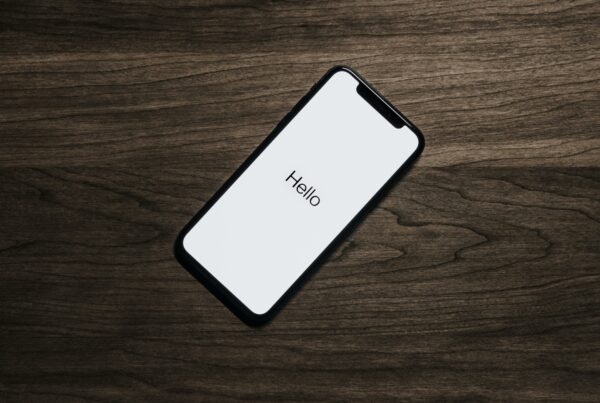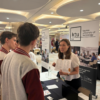When you think about event planning, facility management is not the first thing that comes to mind. We don’t blame you. There are always a gazillion things to do before an event. However, we reckon facility management deserves to be on the to-do list.
So what is facility management, anyway? Maybe you’ve heard the name here and there but the meaning remains nebulous, and you have no idea of how it translates to your job. Simply put, facility management (FM) deals with the “tools and services that support the functionality, facility and sustainability of the entity’s buildings, grounds, and infrastructure.”
If that’s still a bit vague, let’s get into specifics. Those plants in the lobby? Facility management. Daily cleaning? Setting up the AC to make sure everyone’s comfortable? Signals to indicate exits and fire escapes? That’s FM too.
Facility management encompasses both technical services, such as escalator or lift maintenance (“hard facility management”), as well as services that aim to provide comfort and safety, such as landscaping, cleaning, or refilling vending machines (“soft facility management”). For an event, FM may be involved in all of the following:
- positioning check-in equipment throughout the venue
- changing settings for equipment that uses timers to shut down
- adjusting ventilation and air conditioning according to event capacity
- coordinating catering or self-service options for attendees
- arranging extra security for the building and additional staffing
- pre-event cleaning, post-event clean-up, and sanitation throughout
- placing waste and recycling bins, and emptying them when full
- making sure there is a technician (or team) on call for the event
- ensuring there’s a strong Wi-Fi signal and speedy internet connection
- installing interactive tools and equipment so that people can connect, even when creating impactful hybrid events
Now, we know what you’re thinking – you’re not directly responsible for the venues you rent. But given how essential FM is to the success of your event, shouldn’t you have a say?
First things first: planning the layout
Imagine, for example, that you’re organizing an event after-hours. Are you sure the lights won’t go out like they’re programmed to? Won’t the AC shut down for the same reason? Will there be enough staff on the premises to keep the bathrooms clean? If the event is outside, are you certain guests won’t suddenly be sprinkled on? These “little things” that might not be making it onto your to-do list could ruin an attendee’s experience.
Granted, those are only technicalities that you’ll probably be able to sort out a few days before the event. However, arrangements need to be made. Besides, Facility Management plays a role in planning the layout. Imagine that you’re organizing a trade fair. You want to make sure that all the stalls have equal lighting, that no one will freeze directly below a vent, or that the venue is easily accessible for everyone.
Before the big event, you need to create an efficient layout, routes for visitors that don’t require too much walking, VIP areas with special amenities and access control, food and beverage stations, and an event map. Facility Management should advise these decisions to make sure everything is planned for maximum comfort and safety within the building’s capabilities.
Making sure guests are comfortable: facility management during the event
Like event planners, facility managers aren’t superhuman, so they often turn to Intelligent Maintenance Management Platforms (IMMP), CAFM (Computer-Aided Facility Management) and other software solutions to keep track of everyday operations to the last detail. This is how they’re able to monitor everything in real time and be helpful partners.
But don’t think this is a “high voltage” situation where only facility managers can come near the software. Event managers can join the fun too. Take checklists, for example. If you create checklists for the staff, your team won’t forget to do anything between different activities, like disinfecting surfaces, checking the sound system, or replenishing refreshments for guests.
Again, it’s all about teamwork and instant communication. If you’re installing a contactless event check-in and capacity control, for example, that data should be recorded. If your facility manager has access to it in real time, they will be able to know when a conference room needs cleaning. They can even adjust ventilation and air conditioning settings according to the number of people in attendance or the time of day.
Eventbrite claims temperature is something “event planners will never get right”, though perhaps that’s just because they’re not communicating with facility management effectively. And the same goes for dirty public restrooms, which may give a poor impression of your event.
Occupancy sensors (along with a software that can process that data) can also be used to estimate how many people have used the restrooms and when they are due for a cleaning, providing a consistent level of service. This allows us to avoid common complaints such as foul odors, lack of supplies, overflowing rubbish bins, or dirty floors. A 2013 study found that 93% of people consider “dirty or sticky floors” a sign of an unclean restroom, while 89% mentioned “odor” and 88% pointed out “overflowing bins”.
Finally, you can improve customer service by integrating messaging apps with facility management software. For example, if someone complains about the lack of toilet paper through WhatsApp, it can instantly become a work order for staff. Your guests will feel like you’re paying attention to them, and problems may be solved before another guest makes the same complaint.
The take-away: Facility Management is in the details
Now, these may seem like small things, but in a large event they will add up. If you manage to deal with them promptly, attendees won’t notice them at all. However, if you fail to do so, they can easily share their less-than-happy experiences online. That’s why only bad facility management gets noticed. First-class facility management is invisible, which is why unwary event planners often overlook it.
A quote by Walt Disney himself comes to mind: “there is no magic in magic. It’s all in the details.” If Cinderella’s ride-sharing carriage app crashes at midnight, or turns into a pumpkin, go ahead and call it for what it is: lack of maintenance. And if someone eats a bad apple, lack of HACCP compliance is more likely than witchcraft. So let facility managers in: they won’t crash your party, they’ll just make sure you smash it.








